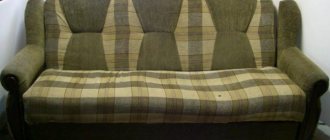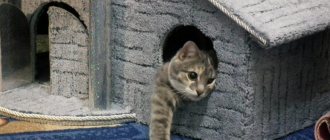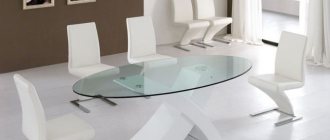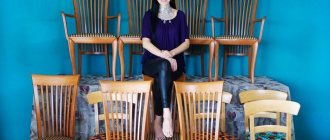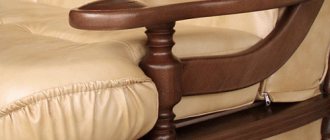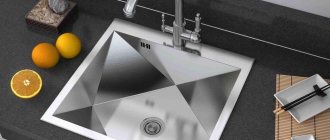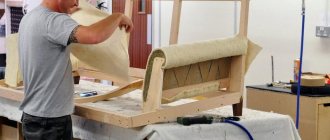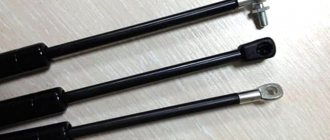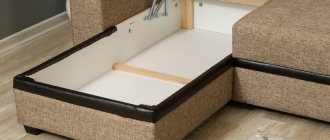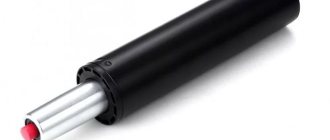Advantages and disadvantages of do-it-yourself restoration
Before starting work, you should familiarize yourself with the pros and cons of restoring sofas yourself. The benefits include:
- Saving money. You don’t have to spend money on buying a new sofa and transporting the furniture to the workshop. The work will be carried out at home, using improvised means.
- Self-control. You will select the appropriate materials yourself, and the work will be carried out under personal supervision. This is especially important for antique furniture, which is difficult to trust to a stranger.
- Creativity. Furniture restoration allows you to bring the most daring design ideas to life.
Receiving the original product. If you are planning to get a creative, stylish sofa that you can’t buy in a store, then you can do it yourself.
But there are also disadvantages:
- If you have no experience working with furniture, you will have to spend a lot of time restoring the sofa.
- Requires a lot of space. In a small apartment, restoration work is almost impossible.
- Lots of noise and dust, unpleasant smell. Keep in mind that restoring furniture is a rather dusty and noisy job, and painting leads to an unpleasant odor.
- Difficulties in selecting materials. This applies to chemicals used to treat the frame. Incorrectly selected materials reduce the quality of the result.
If you are not afraid of difficulties, then proceed with restoration, taking into account the features of repairing upholstered furniture.
Decoration
Sometimes it is for the sake of a new “image” that people begin restoring a sofa. This is especially true for Soviet sofas, strong, ready to serve for a long time, but visually they do not fit into the modern interior.
We offer several ideas for decorating a sofa.
If the sofa has wooden armrests, you can repaint them. How to repaint the entire wooden part of the sofa. If for some reason the previous color does not suit you, take the one that suits your interior. The white option is often the ideal solution. If you don’t want radical changes, just take a stain and slightly change just the shade of the part.
Very often, after restoring a sofa, you want further changes. Updated furniture requires a change in the environment where it goes. The easiest way to create a harmonious ally for an old sofa is to remake an old coffee table. When furniture stands as a set, it looks more convincing in the interior.
There is another type of decoration - when the restoration of furniture is minimal and involves only minor manipulations. For example, a sofa that was still quite usable had a frayed corner. In this case, artistic patches come to the rescue. These can be knitted elements that run through the furniture in an openwork mesh or pattern - it gives the impression that this is how it might have looked originally.
Restoration is an interesting, labor-intensive process and, as many masters admit, addictive. Happy endeavors!
See below for more details.
Possible breakdowns and damage
Over time, even the best quality furniture becomes unusable. The sofa is used intensively, so various damages occur on it:
- the upholstery loses its original appearance - it tears, stains and scratches appear on it;
- dips in seats;
- cracks in the frame;
- damage to the bottom of the furniture.
It is easiest to restore the upholstery while maintaining the integrity of the sofa frame. In this case, only re-upholstering is carried out; global work is not required.
Squashed seats are one of the most common damages caused by frequent use of furniture. Repair consists of replacing the filler or springs, depending on the internal structure of the furniture.
Cracks in the frame and breakage of individual parts of the “skeleton” of furniture are the most difficult damage to eliminate. For repairs, you will need to completely disassemble the furniture, replace broken parts and reassemble the sofa. Please note that if the frame is severely damaged, then restoring it is pointless; buying new furniture will be cheaper.
The breakdown of the lower part is that the springs, under the influence of heavy loads, press through the bottom of the sofa, made of thin fiberboard. In this case, you will need to completely replace the broken part.
How to remake furniture at home?
Just follow the instructions:
Stage I: we begin restoring furniture by disassembling it, which involves unscrewing and removing locks, as well as detaching old staples that were needed to secure the upholstery to the frame. Be sure to keep trash bags on hand to immediately remove dust and previous litter.
Stage II: carrying out repair work and replacing parts that have become unusable. In fact, restoring an old but beloved sofa is possible if you select the right spare parts. If you notice that cracks have appeared on the beams that form the frame, this indicates that their useful life has come to an end. Replacement should be carried out by choosing solid beams. If desired, you can order them from a carpenter or prepare them yourself. In order for the alteration to be carried out efficiently, the joints of the beams should be registered using PVA glue. If you notice broken parts, you also need to repair them or install new ones by cutting them out with a jigsaw.
For their subsequent fixation, the master uses nails or a pneumatic stapler. This tool will be needed if you decide to return the furniture to its original appearance. Springs often break during operation. We repair them by completely replacing the blocks. Sometimes this is the only solution that is suitable for bringing the seats of your favorite folding beds back to normal.
Stage III: replacement of the filler, which is often foam rubber. Over time, it cakes and becomes unsuitable for further use. We restore the seat by removing the old material and covering it with new. How to restore the seat? Only in this way, although it can be done easier by leaving the same filler if it is in good condition.
Stage IV: replacing locks is a mandatory stage when restoring furniture.
At the final stage, a new cover is sewn and fixed to the piece of furniture. Britannica sofas and armchairs are repaired using the same scheme.
If such work seems burdensome to you, a master who repairs leather sofas at home will help. He knows exactly how to restore furniture.
Required Tools
Before starting work, prepare the following tools:
- screwdriver;
- screwdriver;
- pliers;
- self-tapping screws;
- construction knife;
- construction stapler;
- roulette.
This is a standard set of tools that allows you to disassemble furniture, repair damage and reupholster it.
The materials you will need are wooden boards and fabric for upholstery. If you want to use other decor, then prepare stickers, paint and varnish.
Sofa design
To restore a sofa with your own hands, it is worth studying its design and understanding what parts it consists of:
- Frame. The basis of the furniture that bears the heaviest load. The service life of the sofa depends on the quality of the frame. The thicker the beams, the more reliable the base, so it is not recommended to buy furniture with a fiberboard frame.
- Spring block. Responsible for the elasticity of the seat and consists of several dependent or independent springs.
- Base for spring block. It consists of transverse strips (lamellas) holding springs. Expensive furniture has durable, wide slats, while cheap furniture has thin fiberboard slats. In modern sofas there are also plastic slats, which are used to reduce the cost of the product. They quickly wear out, break and are pressed through.
- Dense material. Used to protect foam rubber from damage by springs. Felt is most often used.
- Foam rubber. Placed on felt for softness. Expensive sofa models use thick foam. It is possible to increase its thickness during restoration, provided that the furniture structure is not sliding.
- Sintepon. It is glued to the foam rubber to protect the soft part from the hard inner surface of the upholstery.
- Upholstery. Can be made from almost any materials.
Some features of the banner
The main nuance in high-quality reupholstery of any sofa is the fastening of the upholstery. The material should not be too stretched, but there is no need to give the fabric too much freedom. Press the fabric with your hand - on a properly re-upholstered sofa this can be done without much effort, after which the material and filler should return to their original state. If you hear creaks or cracks in the upholstery, it means the tension is excessive and over time the upholstery will tear.
Corner sofa
The main condition when working with such a design is the combination of the pattern. You need to start marking the upholstery from one of the edges, moving towards the opposite. The sequence is as follows: first we sheathe the corner, then the sleeping area, and only then the backrest.
Reupholstering a corner sofa should start from the corner.
Spring sofa
When upholstering a spring sofa, an additional layer of material is most often used between the upholstery and the metal frame. This is to reduce the risk of the upholstery tearing at the sides where the soft padding layer does not fit.
When working with a spring sofa, an additional layer of material is used.
The nuances of working with genuine leather
When using genuine leather as upholstery, several rules are followed. Firstly, the thickness of the material should not exceed 1.5mm. Such leather remains elastic for a long period of time and does not crack in places where it is bent.
When cutting leather, you should not use pins and needles to secure the material in any place except the seams, because holes in the leather will not be closed. When stitching leather, lubricate the sewing machine foot with Vaseline, this will speed up the stitching process and protect the material from tearing.
When upholstering a sofa with genuine leather, you should be as careful as possible.
The material left for allowance may pill when stretched. To avoid this, we iron such places with an iron through gauze - and the problem is solved.
After studying all the stages of the process of reupholstering a sofa according to our instructions, all that remains is to be patient and you can begin repairing upholstered furniture at home with your own hands. Even the most bulky sofa can be restored to its former luster in just one or two days of work.
Instructions for disassembling the sofa
When disassembling furniture at home, it is recommended to photograph each step so that you can later assemble the entire structure without any problems. How to disassemble a sofa:
- Removing the armrests. The armrests are bolted to the side of the wooden frame. To remove them, lift the seat and unscrew the bolts with a wrench.
- Dismantling the mechanism. If you have a transforming sofa, then at the second stage the mechanism is dismantled. It is attached to the sides of the backrest and frame. Removable using a screwdriver or screwdriver.
- Removing the back and seat. After removing the mechanism, the back and seat can be easily separated.
- Removing the upholstery. Turn the seat and backrest over, release the brackets with a screwdriver and carefully remove the upholstery. If you plan to keep it, be sure to sign it on the inside with a marker, which will make assembling the furniture easier.
Removing the filler and springs. First, the batting or padding polyester located between the foam rubber and the upholstery is removed. Then the springs are removed using the tool that is suitable for the method of attaching the block.
After disassembly is complete, carefully inspect each part for damage. Depending on the condition of the frame, filler and upholstery, further work is carried out.
Soft part repair
You can determine that the soft part requires repair by looking at the depressed seat. The foam changes as follows:
- A piece of new foam rubber is spread on a flat surface. It should match the thickness of the old piece.
- The old foam rubber is laid on the new foam rubber, the outline is outlined and cut out with a construction knife.
- The finished piece of foam rubber is placed on the frame and checked for any protruding parts. If there is, then the excess part is cut off.
- The lower part of the foam rubber is coated with construction glue and glued to the frame.
The next layers should be laid only after the glue has dried. It is important that the foam adheres tightly to the frame.
Restoration of decorative elements - shelves, armrests, pillows
Complex sofa models often have shelves in the armrests, ornate legs, and decorative elements. Pets often taste them and sharpen their claws on them, as a result of which their appearance leaves much to be desired. Such elements are also restored or replaced with new ones. Here are some ways:
- Painting. A contrasting color will help change the design of the room. Identical to the old one, it will give the sofa a fresh, new look.
- Varnishing or matting. Bright or muted wooden details will make the room cozier.
- Aging. If the sofa matches the style, craquelure (decorative treatment) will enhance this effect.
For sofa cushions, restoration is simple - new fabric, contrasting or matching in color, for making covers.
Spring block repair
Replacing the spring unit is required in cases where there are serious damages that cannot be repaired. If several springs are damaged, they can be restored. They are easily straightened with pliers. They can also be completely removed and replaced with new springs, connecting them with other wires.
If a snake-shaped block is installed in the sofa, then severely bent or broken parts are replaced with a new snake, which you can make yourself. To do this, a thick grosgrain ribbon is wound around a thick block of wood, and one end is nailed to the frame. Then the wire is pulled in the opposite direction, creating a semblance of waves.
Frame repair
When restoring furniture, it is important to restore the integrity of the frame. First you need to carefully examine it to find any existing damage. Then the broken parts are removed and new elements are made from them. You can make the parts yourself by cutting them from dry wood. But it is important to fit them in size to the nearest millimeter. If you are not confident in your abilities, then it is better to entrust the production of elements to specialists in a carpentry workshop.
Finished parts are attached to the frame with self-tapping screws or nails. Tenon-groove joints are additionally lubricated with construction adhesive.
